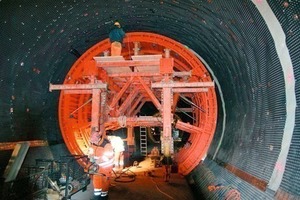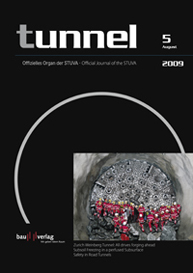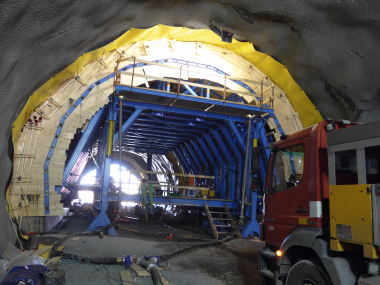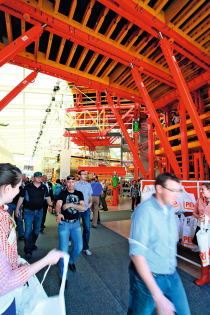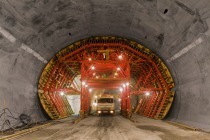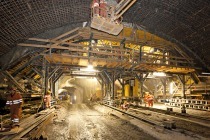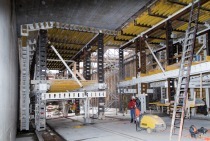External Vibrators for the Engelberg and Turtmann Tunnels
The existing Zentralbahn route between the locations of Grafenort and Engelberg in Switzerland possesses extremely steep gradients and thus only low travelling seeds are possible. As a result a project team decided in favour of building the 4,040 m long Engelberg Tunnel, which was completed in its carcass state by 2005 with the exception of a section through Quintner Lime-stone, a pronouncedly water-bearing layer. Ingressing water delayed construction until the installation of the 50 to 70 cm concrete inner vault was embarked on in winter 2008/09.
A steel formwork carriage from the Peri AG Schweiz was used for creating the inner shell. The concrete is compacted by means of a Mooser compressed air vibrator from the new VR series. The formwork vibrators are attached directly to the receiving plates on the sheathing of the steel formwork carriage and in this way cater for direct transfer of force on to the concrete. Optimal compaction depths of 50 cm and more (depending on the concrete consistency and formwork design) have been revealed thanks to sample borings.
The compressed air unit with rapid start-up acceleration swiftly penetrates the characteristic frequency range of each formwork and in this way avoids an excessively large dynamic strain on the formwork carriage. The individual compressed air vibrators are controlled centrally via a corresponding air control unit at each wall side. The vibrators are devised in such a way that these compressed air versions do not freeze up even during the cold Swiss winter.
The advantages of these almost maintenance-free compressed air vibrators are also taken advantage of for the Swiss Turtmann cut-and-cover tunnel, consisting of 2 separate tunnel tubes, each 1,350 m in length. The vibrators for the Turtmann formwork carriage are also stationary and attached directly to the sheathing via the reception plates. The compaction concept foresees that the vibrators only operate at those points where concrete is actually being placed so that the formwork is not unnecessarily affected by the vibration energy. As a result no more than 6 vibrators run simultaneously.

